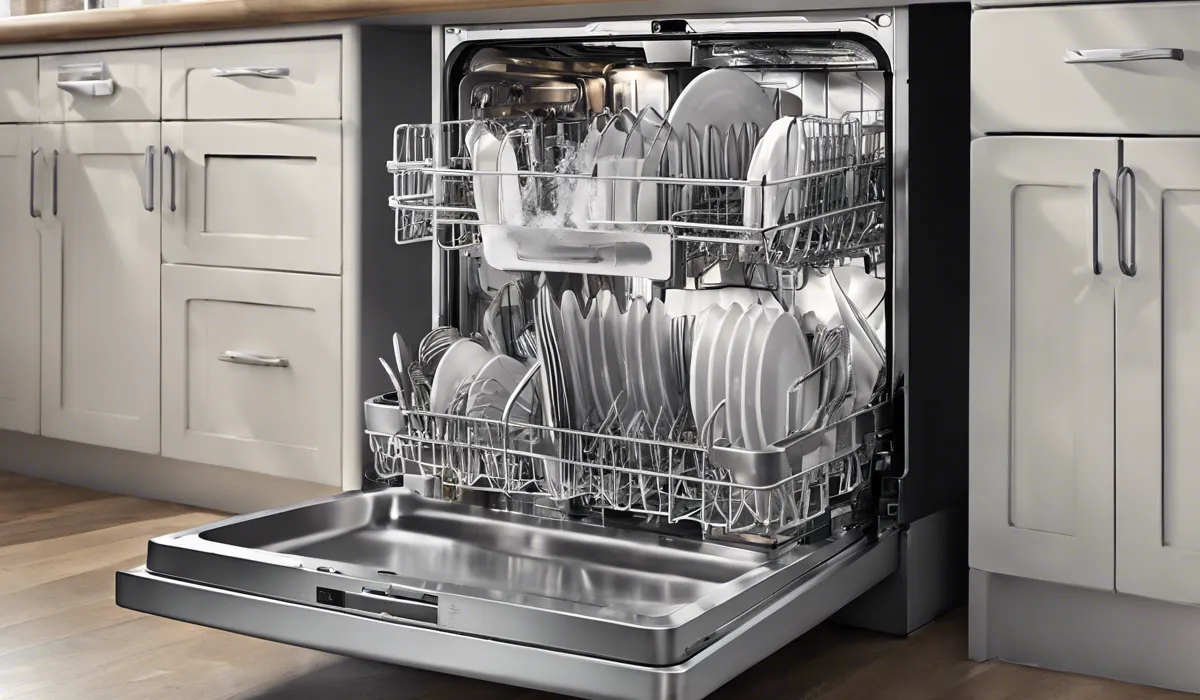Do Dishwashers Kill Germs? The Surprising Truth Revealed!
Dishwashers can kill germs using hot water typically between 140°F and 145°F. The high temperature, alongside detergent, effectively sanitizes dishes, eliminating most bacteria and viruses. However, some germs may resist, so ensure the dishwasher reaches the proper sanitizing temperature.
Dishwasher Mechanisms that Combat Germs

How Dishwashers Work
Dishwashers are effective appliances designed to clean and sanitize your dishes with ease. They work by spraying hot water mixed with detergent onto the dishes, the force of which helps to remove food particles and grease.
After the initial wash cycle, dishes are rinsed with fresh water to eliminate any remaining detergent and debris. The final stage is the drying cycle, where heat helps to evaporate water from the dishes, leaving them dry and clean.
High Temperatures and Sterilization
The high temperature of the water used in dishwashers, typically between 140°F and 145°F, is crucial for killing germs.
These temperatures exceed the threshold at which most bacteria and viruses can survive, thus providing an effective means of sterilization.
The dishwasher’s ability to maintain such high temperatures consistently throughout the cycle ensures thorough cleaning and sanitization.
Detergents’ Chemical Properties
Detergents play a significant role in the germ-killing process. They contain chemical properties that break down and dissolve food particles, grease, and bacteria.
The enzymes and other cleaning agents within the detergent work to dismantle the cell walls of bacteria, leading to their destruction. This chemical action complements the physical cleaning provided by the water jets.
The Rinse Cycle’s Role in Germ Removal
Following the main wash, the rinse cycle is essential for removing any lingering germs and detergent.
This stage uses clean, hot water to ensure that no residue is left behind on the dishes. It acts as the final step in the germ-killing process, washing away any dead bacteria and leaving dishes not only visually clean but also hygienically safe.
Effectiveness of Dishwashers Against Various Germs

Common Germs on Dishes
Dishes can harbor a variety of germs, including bacteria like E. coli and Salmonella, viruses such as the norovirus, and fungi.
These microorganisms can pose health risks, which makes the sanitizing power of dishwashers so important for household hygiene.
Studies on Dishwasher Efficiency
Research has shown that dishwashers are highly effective at killing germs. Studies reveal that the combination of high temperatures, detergents, and the mechanical action of water jets can eliminate up to 99.999% of bacteria and viruses, making dishwashers far more efficient than manual washing.
Manual Washing Versus Dishwashing
When compared to manual washing, dishwashers come out on top regarding germ elimination.
Hand washing often fails to reach the temperatures necessary for sterilization, and the cleaning process may not be as thorough, leading to a higher chance of germ survival on the dishes.
Importance of Dishwasher Maintenance
Maintaining your dishwasher is vital for its effectiveness in killing germs. Regular upkeep, such as cleaning filters and checking spray arms, ensures that the machine operates at peak performance.
A well-maintained dishwasher can consistently reach the necessary temperatures and cleaning power to eliminate harmful microorganisms.
Best Practices for Maximizing Dishwasher’s Germ-Killing Abilities

Effective Loading Techniques
Loading your dishwasher correctly can significantly impact its cleaning and sanitizing effectiveness. Ensure that dishes are spaced out enough to allow water and detergent to reach all surfaces.
Avoid nesting and overlapping items to ensure that every dish is exposed to the cleaning agents and high temperatures.
Choosing Detergent and Cycle Settings
Selecting the appropriate detergent and cycle settings is essential for maximizing the germ-killing potential of your dishwasher.
Use a high-quality detergent and choose a cycle that includes a high-temperature wash and rinse to ensure that you are effectively sanitizing your dishes.
Regular Dishwasher Cleaning and Maintenance
Regularly clean and maintain your dishwasher to keep it functioning effectively. Clean the filter, wipe down the seals, and ensure that the spray arms are not clogged.
By keeping your dishwasher in good condition, you can rely on it to kill germs efficiently.
Additional Sanitization Steps
If you have particular concerns about sanitization, consider using additional steps such as a sanitizing rinse agent or selecting the heated dry option if available.
These options can provide an extra layer of germ-killing power, giving you added peace of mind.
FAQs About Dishwashers and Germs
Do dishwashers kill most germs on dishes?
Yes, dishwashers kill most germs on dishes by using hot water that typically reaches between 140°F and 145°F, combined with detergent to sanitize effectively.
Is the hot water in dishwashers enough to sanitize dishes?
Yes, the hot water in dishwashers, when reaching the proper sanitizing temperature of between 140°F and 145°F, is typically enough to sanitize dishes.
Can any germs resist the sanitizing process in a dishwasher?
Some germs may resist the high temperatures and detergents used in dishwashers, so it’s important to ensure the dishwasher reaches the proper sanitizing temperature.
What temperature should my dishwasher reach to effectively kill germs?
Your dishwasher should reach temperatures between 140°F and 145°F to effectively kill germs and sanitize your dishes.
Are detergents necessary for sanitizing dishes in a dishwasher?
Yes, detergents play a crucial role in the sanitizing process by working alongside high temperatures to eliminate bacteria and viruses on dishes.
Final Thoughts
Dishwashers utilize water heated to 140°F-145°F and detergents to sanitize dishes, successfully killing most bacteria and viruses.
To ensure effective germ elimination, verify that your dishwasher reaches the necessary sanitizing temperatures, as some resilient germs may survive lower heat levels.





